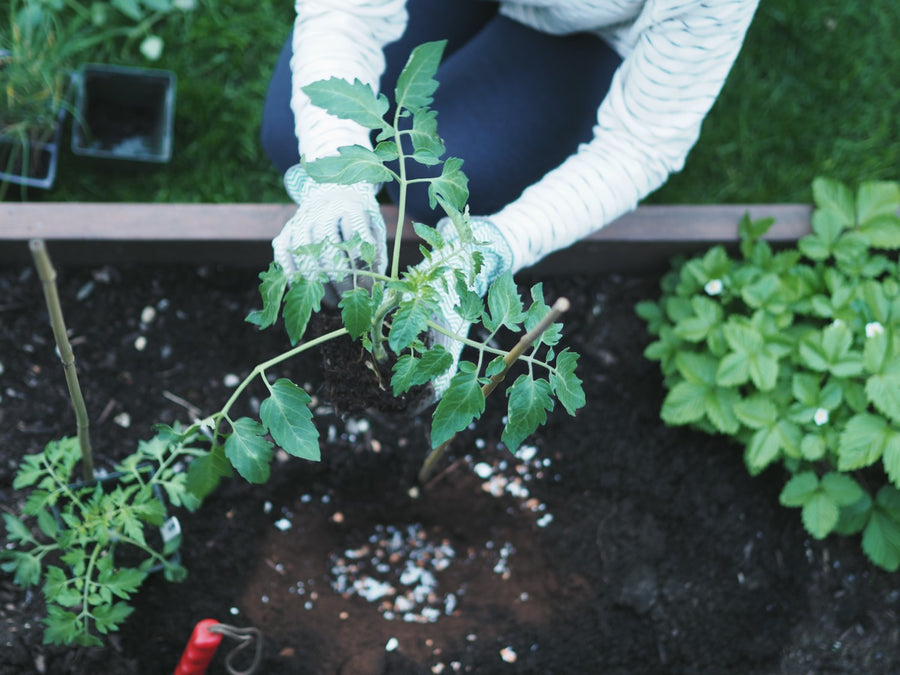
Essential Tips for a Thriving Garden
New and seasoned gardeners can agree on one thing: there's always something new to learn. Around here, gardening advice, wisdom, and tricks of the trade are never in short supply. Growing and tending to the earth beneath your feet is a hobby for some, a career for others, and simply put, a passion for many. Take our farmers, for example: they know firsthand the importance of caring for the land—it's their livelihood. No matter the reason for your desire to take part in it, gardening is both a science and an art. These are our tips for success.

1. How to Start Seeds in Eggshells
An abundant garden starts with strong, hardy seedlings. And to start those seedlings, we recommend using eggshells. Germinating your vegetable, fruit, or flower seeds in eggshells not only reduces waste in your home, but gives the seedlings-to-be a boost of calcium carbonate, which strengthens cell walls and supports plant growth. While transplanting your seedlings, crumble the shell into small pieces to give the roots room to grow and help your garden maintain an ideal pH level for your crops.

2. How to Compost at Home
If you have a backyard compost bin or room for a small makeshift composter on your patio, there's simply no reason not to start composting your kitchen scraps, coffee filters, eggshells, and newspapers. The benefits are endless! You'll reduce the amount of waste headed to your local landfill, which is reason enough to start. You'll also be left with a free and incredibly nutrient-rich medium for your plants. If you have sandy or clay-like soil, compost can be the golden ticket to a thriving garden.

3. Grow Your Own Cilantro at Home
Not ready to break ground or commit to a full-on garden? Growing your own herbs from seeds is a great way to start small and build up your confidence as a gardener. Cilantro is a particularly hardy and versatile herb that thrives indoors, so it will be right at home on your windowsill. Keep your cilantro plant happy and you'll be able to harvest the fragrant leaves in as few as 3-4 weeks—just enough time to decide whether you're craving chilaquiles or huevos rancheros.

4. 3 Rules of Thumb for Small Space Gardening
Just like you don't need a restaurant-level kitchen to cook a delicious meal, you don't have to have a huge backyard (or any backyard, for that matter) to garden. With these 3 rules of thumb, gardening can be done virtually anywhere, no matter how small the space. Read on to learn how proper planning, spacing, and plant food can help you find gardening potential in any location, from balconies to porches.

5. How to Grow Tomatoes Successfully
If you've mastered herbs and feel ready to take on a bigger gardening project, consider tomatoes. The vine plants are relatively easy to manage, but require some pruning and attentive watering. Growing tomatoes is also a great opportunity to learn more about your hardiness zone, which varieties fare best in your area, and how to choose the right kind of soil for particular plants so that you can enjoy juicy, vine-ripened tomatoes all summer long.

6. Recycled Water: The Key to Summer Vegetable Gardens
One thing many first-time gardeners struggle with is watering. Over- and under-watering is one of the most common causes of houseplant tragedies and plant woes, so it's important to understand your plant's watering needs before you fill up the watering can. And when it comes to water, there's really no need to turn on the hose or faucet. Use these tips to safely recycle water from inside and outside your home. Your garden (and the planet) will thank you!
7. Eggshell Powder for Organic Pest Control
All's well and good until the slugs and beetles find their way into your garden and wreak havoc on your hard work. If you start to notice large holes in your plants' leaves, chew marks on the edges, or wilting and yellowing, chances are you have some pesky garden visitors. To ward them off without harsh or synthetic chemicals that could damage your local ecosystem, try creating your own DIY eggshell powder for organic pest control.

8. A Vegetable Garden Fit For Fall
Most gardening legwork happens in the spring and summer, including germinating and sowing seeds, transplanting, and mulching or adding fresh compost and soil to your garden for the growing season. However, even in the coldest regions of the country, gardens can still thrive through autumn. This guide includes tips for preparing a fall garden and choosing vegetables for your hardiness zone, even if below freezing temperatures are on the horizon.

9. Preparing Your Garden for Winter
If you plan on reviving your garden in the spring, you'll need to do a bit of preparation before winter hits. Letting the snow and prolonged frosts take their toll on your unprotected garden isn't the worst thing you could do, but taking the time to turn the soil, add compost, replenish the mulch, and pull weeds could save you a headache when warmer days return a few months later.











